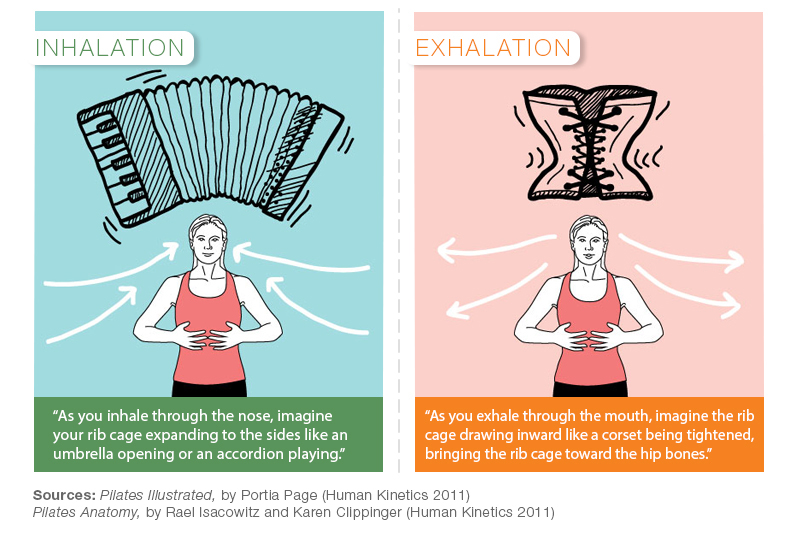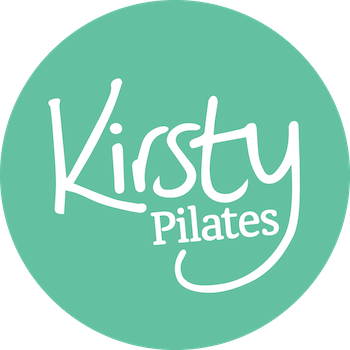If you think back to last week, I talked about your core being a group of muscles that form a cylinder in the centre of your body (click here for a recap).
Your deep abdominal muscles form the cylinder wall, pelvic floor muscles form the base and the diaphragm forms the lid.
This week we are going to focus on breathing and how the diaphragm (the breathing muscle) can help create core stability, regulate energy levels and help you to relax your muscles and mind.
Lateral Breathing
There are actually a few different ways a person can breathe. Pilates uses lateral (sideways) breathing because in order to keep your abdominal muscles switched on, the only place air can go is into the sides of your body.
In lateral breathing, when you inhale the lungs fill with air and the ribcage and sides of your back flare and expand outwards (like an accordion opening).
When you exhale your abdominal muscles naturally switch on to squeeze all the air out of your lungs (like a corset tightening).

A breathing pattern can be added to an exercise so that you inhale during a certain phase of a movement and then exhale during another phase. Using lateral breathing and movement together can:
- Help you to keep your abdominal muscles switch on
- Alter the muscles that are being used
- Ensure you’re not holding your breath as you start to progress onto harder exercises
Homework Exercise
- Stand in good posture, ideally with a full length mirror in front of you
- Make a fist with each hand and place your knuckles into each side of your ribcage
- Take a full breathe in through your nose, attempting at the same time to push out your fists as your ribcage expands
- Breathe out through your mouth, feel your ribcage draw inwards
- Check in the mirror that there is no movement from your shoulders when breathing in
This can exercise can be used daily to help reduce stress, focus your mind and ‘check in’ with yourself. We spend so much time rushing around, that often we forget to breath deeply!
Try practicing for a few minutes either sitting on a chair on laying your back with good posture.
Focus your attention on feeling your ribcage expand when you inhale and then notice your ribcage drawing inwards as your exhale. When your mind wanders (it almost certainly will), kindly bring your focus back to feeling your ribcage move.

